Clinical

Head lice: Too close for comfort?
In Clinical
Let’s get clinical. Follow the links below to find out more about the latest clinical insight in community pharmacy.Bookmark
Record learning outcomes
One of the peak times for head lice infestations is when children have returned to school after the summer holidays – so be ready to debunk some common myths and misconceptions about this unlovely parasite...

Â
Learning objectives
After reading this feature you should be able to:
- Advise customers on the prevention and treatment of head lice and other common parasitic infestations
- Understand the different treatment options and why treatment might fail
- Debunk the popular myths and misconceptions that surround head lice.
Â
Head lice is the second commonest communicable health problem among children after the common cold. Infestations are commonest in children aged four to 11 years, with the peak age for infestation at seven to eight years of age. There is little information on the current prevalence of head lice infestation.
“We don’t know and we have never known what the prevalence of head lice is,†says Ian Burgess, director of the Medical Entomology Centre. “All the studies over the decades have only ever shown what is known as a point prevalence – how many there were on that day in that place.â€
“Despite the introduction of physically-acting products that should not be affected by resistance issues, the actual numbers of cases we find in schools have not dipped significantly overall, although you get ups and downs. “What we have found is that most children with lice have fewer, which makes them harder to detect. The refractory cases – where parents refuse to do anything for whatever reason – do not seem to change much and, of course, keep the system going.â€
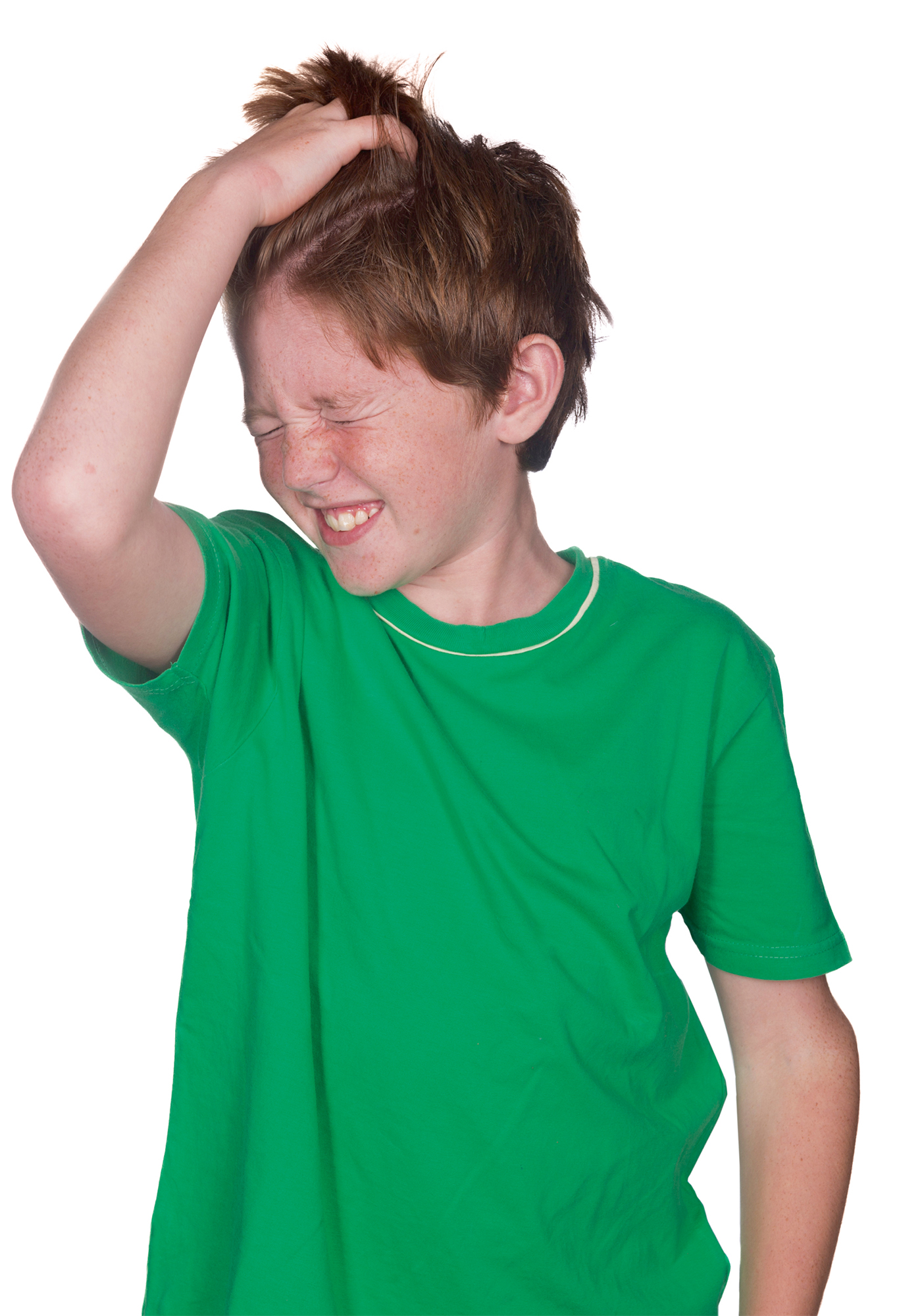 Treatment
Treatment
NICE advises that treatment should start only if a live head louse is found using wet or dry detection combing.1 If lice are suspected, then all household members need to be checked. There are many different treatments available that work in slightly different ways – so pharmacy staff need to be knowledgeable about how each product works, says Cathy Crossthwaite, Numark’s marketing co-ordinator.
“This category is important to community pharmacy as infestations can be a sensitive issue, with many people embarrassed that they or their children may be affected. Even if people are self-selecting products from the GSL category, they may still require advice as to whether they have chosen the best product for their situation.â€
The range of treatments and methods can be overwhelming, especially for people buying a treatment for the first time, she says. According to NICE, there is limited evidence to support the effectiveness of each treatment option.1
“No option is clearly superior or inferior to the others in terms of effectiveness... there are advantages and disadvantages for each method and no method can guarantee success,†it says. Customers should be advised that all treatments need more than one treatment session, it adds, and that treatment has the best chance of success if performed correctly and if all affected household members are treated the same day.
Pharmacy staff should stress that people need to check whether treatment was successful by detection combing on day two or three after completing a course of treatment, and again after an interval of seven days (day nine or day 10 after completing a course of treatment). It is also important to ensure that the head lice products recommended are suitable for groups such as babies under six months old, pregnant women, and people with asthma or allergies.
Â
Common myths and misconceptions about head lice
There is still much stigma attached to head lice for many parents and unfortunately this is hard to break, says Numark’s Cathy Crossthwaite. “Pharmacists should ensure that counter assistants are skilled to provide advice in this category. Desensitising the issue will make it much more likely for that customer to consult the pharmacy on any future ailment.â€
1. Head lice can be prevented
NICE says it is not possible to prevent head lice infestation but regular detection combing (e.g. weekly) is the best way to identify any new infestation quickly. The following are not recommended for preventing head lice transmission:
- Products marketed as head lice repellents
- Repeated use of head lice treatments in the absence of lice
- Measures beyond normal personal hygiene, housekeeping and laundry.
2. If you have lice, your head will be itchy
Many people with head lice don’t itch. An itchy reaction occurs only if the person is allergic to head lice bites or faeces. The itch may only start a few weeks after the infestation.
3. You can get head lice from pets
Head lice can only live on human beings; they can’t be caught from animals.
4. Head lice carry and transmit diseases
Head lice have not been shown to spread disease.
5. Lice can jump and can spread via items such as clothes, towels and hairbrushes and can infest the house
Lice do not have wings and cannot fly, jump, hop or swim. They move by crawling, which is why head-to-head contact is the commonest way for head lice to spread from one person to another. Head lice only survive on heads and die within three weeks when they fall off as they are no longer able to feed or breed. NICE says there is no need to wash clothing or bedding that has been in contact with lice.
6. People are more likely to get head lice if their hair is dirty, they have bad personal hygiene or their home is dirty
Getting head lice has nothing to do with personal hygiene or the cleanliness of a home. Head lice will live on all types of hair, having no preference for whether it is clean or dirty, long or short.
7. People get head lice from taking ‘selfies’
“I suspect selfies may play a minor role but the real villain of the piece is the sleep-over,†says Ian Burgess. “In our trials, the most obvious risk of catching head lice came from staying over at someone else’s house with a group of others of the same age, whether that is friends, neighbours or more distant relatives.â€
8. Children with head lice should be isolated
As long as they have begun treatment, isolating a child who has head lice or keeping them out of school is not necessary. Transmission can be prevented by taking precautions such as avoiding close contact with other people.
Treatment options
NICE recommends the following management options:
Dimeticone 4% lotion (Hedrin lotion)
This is a silicone-based physical insecticide that works by coating head lice and preventing them from eliminating water, causing them to die. The lotion does not kill eggs, so must be repeated after seven days to kill any lice that have hatched from eggs since the first application.
Dimeticone is left on the hair and scalp for eight hours (or overnight) and then washed out. It is suitable for all ages, those with skin conditions and those with asthma. It cannot be sold OTC for children under six months and has a good safety record.
Dimeticone 92% spray (NYDA)
This is a physical insecticide and is not suitable for children under two years of age.
Isopropyl myristate and cyclomethicone (Full Marks Solution)
This physical insecticide kills head lice by dissolving the wax coating on the louse exoskeleton, leading to uncontrollable dehydration and death. It is suitable for those with asthma but not suitable for children under two or people with skin conditions.
The solution should be applied twice, with seven days between applications. After being left in place for 10 minutes, the hair should be combed with a fine-toothed comb to remove lice and then washed using shampoo to remove the solution.
Malathion 0.5% aqueous liquid
This chemical insecticide has been used for many years to kill head lice. It is suitable for all ages and those with skin conditions but cannot be purchased OTC for children under six months. It should be applied twice, with seven days between applications.
The insecticide needs to be applied from the roots to the tips of the hair, left on the hair and scalp for 12 hours or overnight, and then washed out using shampoo. The disadvantage of this product is its unpleasant smell and there is now strong evidence that head lice are becoming increasingly resistant to chemical insecticides.
Wet combing
Wet combing (e.g. using the Bug Buster comb and method) is suitable for all ages, those with skin conditions and those with asthma. Treatment involves methodically combing wet hair with the fine-toothed comb to remove lice four times over two weeks. Wet combing should be continued until no full-grown lice have been seen for three consecutive sessions.
The advantage of this method is that no insecticides are used so resistance is not an issue, but the technique is time-consuming and labour intensive, which may be a drawback if several people are to be treated at the same time. Research has shown that bug busting is the most effective OTC treatment for head lice when compared to insecticides.2
Why treatment fails
Human error is the commonest reason why treatments fail, says Ian Burgess. Reasons for treatment failure include:
- The diagnosis of a head lice infestation may have been incorrect
- The customer may not have followed the treatment instructions correctly – not applied enough treatment, not applied it thoroughly enough, or not applied a second treatment
- If wet combing, the correct type of comb or combing technique might not have been used for a sufficient duration and for the recommended number of sessionsÂ
- The lice may have been resistant to the chosen treatment
- The person treated may have picked up a new infestation immediately after the treatment finished
- Family members who are secretly harbouring lice may not have been treated.
How to manage treatment failure
- Advise the customer to repeat the same treatment or switch to a different treatment
- Advise that household members and close family and friends be assessed using detection combing to identify possible sources of reinfestation
- Whichever treatment strategy is chosen, ensure that all affected household contacts are treated again simultaneously. Other affected close contacts should also be treated to reduce the risk of reinfestation
- Stress the importance of checking that the treatment has worked by detection combing for up to 10 days after treatment.
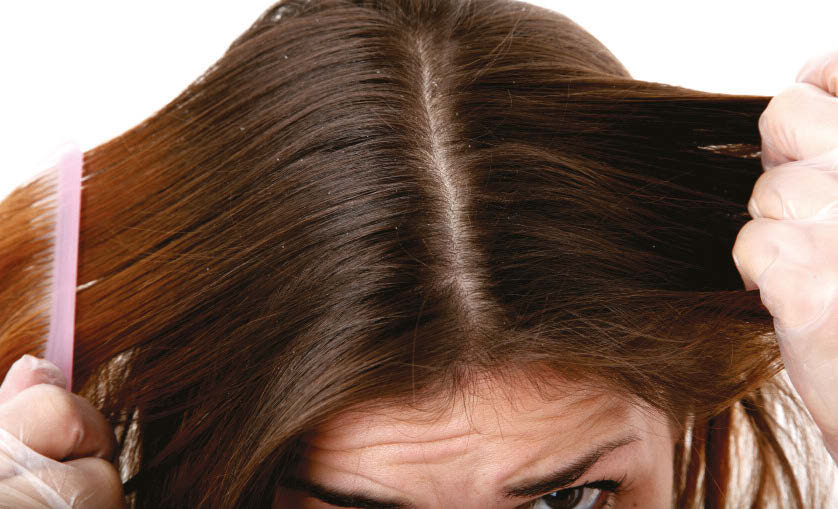 Get yourself known
Get yourself known
Joanna Ibarra, programme adviser for Community Hygiene Concern, a charity that promotes the Bug Busting solution, advises pharmacists to contact local schools that promote educational Bug Busting days in October, January and June. “Pharmacists should ask schools to give parents the message that they can get help from the pharmacy,†she says.
“Every term there will be new parents who will be taken by surprise at finding their children have a head lice infestation and will go to the pharmacy for advice and treatment. “This is a terribly time-consuming and annoying problem that many people have to cope with on top of the stress of daily life, so helpful advice will endear pharmacy in the eyes of the public.â€
Â
References
- NICE Clinical Knowledge Summaries on the management of head lice. February 2015
- Hill N, Moor G, Cameron M, et al. Single blind, randomised, comparative study of the Bug Buster kit and over-the-counter pediculicide treatments against head lice in the United Kingdom. BMJ 2005; 331:384
Â
Other common parasitic infestations
Scabies
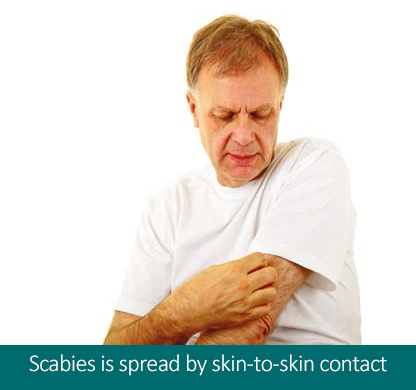 Scabies, a very itchy skin condition that is worse at night, is caused by human scabies mites and is commonest in the young and the elderly. A rash, a mixture of scratch marks and red scaly areas appear on areas where the mites have burrowed into the skin, which may become infected and develop small pus spots. The mites are usually picked up by direct skin-to-skin contact with someone who already has scabies.
Scabies, a very itchy skin condition that is worse at night, is caused by human scabies mites and is commonest in the young and the elderly. A rash, a mixture of scratch marks and red scaly areas appear on areas where the mites have burrowed into the skin, which may become infected and develop small pus spots. The mites are usually picked up by direct skin-to-skin contact with someone who already has scabies.
Permethrin 5% cream is recommended as the first-line treatment, with malathion 0.5% lotion used if permethrin is ineffective. All members of the household, close contacts and sexual contacts should be treated simultaneously with the patient to reduce reinfestation. Patients should be advised to avoid close body contact until they have completed treatment.
The insecticide must be applied overnight to the whole body from head to toe (including the scalp, neck, face and ears), paying special attention to the areas between the fingers and toes and under the nails. This should be repeated a week later. Treatment should not be applied after a hot bath (as this increases systemic absorption and removes the drug from its treatment site). If the hands are washed, the liquid or cream must be reapplied.
Threadworm
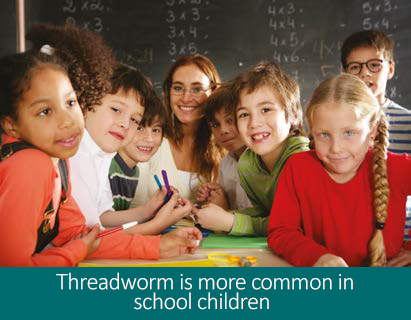 Threadworm is a parasitic worm that infests the intestines of humans. Infestation occurs after swallowing eggs, usually by eating contaminated food or via contaminated hands. Threadworm is more likely to affect school or pre-school children than adults because of their inattention to good personal hygiene and their close contact with other children.
Threadworm is a parasitic worm that infests the intestines of humans. Infestation occurs after swallowing eggs, usually by eating contaminated food or via contaminated hands. Threadworm is more likely to affect school or pre-school children than adults because of their inattention to good personal hygiene and their close contact with other children.
The commonest symptom is perianal itching, which is worse during the night. Infestation may be symptomless and only detected when threadworms are seen on the perianal skin or in the stools. They are best seen at night when the females emerge from the anus to lay their eggs.
All household members should be treated at the same time. For adults and children aged over six months, a single dose of mebendazole can be recommended combined with hygiene measures. This should be repeated in two weeks if infestation persists.
For children aged six months and under, hygiene measures alone are recommended. For pregnant or breastfeeding women, physical removal of eggs by regularly washing or wet wiping the perianal area, combined with hygiene measures, is the preferred treatment.
Bed bugs
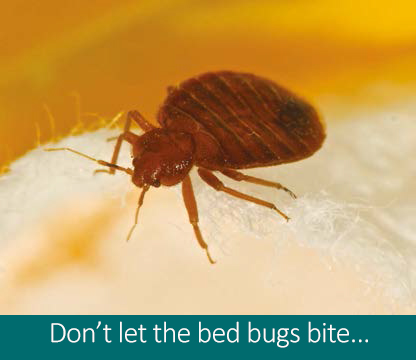 Bed bugs are small blood-sucking insects that can live in cracks and crevices in and around beds. Attracted by body heat and carbon dioxide, they crawl out at night to bite exposed skin and feed on blood. Some people develop itchy red bumps, which often occur in straight lines, on the face, neck, hand or arm.
Bed bugs are small blood-sucking insects that can live in cracks and crevices in and around beds. Attracted by body heat and carbon dioxide, they crawl out at night to bite exposed skin and feed on blood. Some people develop itchy red bumps, which often occur in straight lines, on the face, neck, hand or arm.
Customers should be advised to contact their local council or a professional pest control firm for expert help in eliminating a bed bug infestation. If the bites are itchy, pharmacy teams can recommend antihistamine tablets or a mild steroid cream.
Â
Key facts
- Head lice are very common among children
- Checking for head lice infestations regularly will keep them at bay
- There is much misinformation and social stigma about head lice
